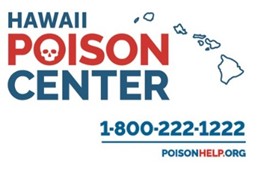Environmental Monitoring & Advisories
Environmental Data
Environmental Monitoring Data Portal
DOH has launched an Environmental Monitoring Data Portal to share results from ongoing monitoring of the environment in the areas affected by the August 2023 Lahaina and Kula wildfires.
Click Here to Access the Portal
Environmental Advisories
Hazard Advisory for Individuals Returning to Impacted Areas Where Debris Removal Has Not Been Completed
The impacted area and its surroundings are hazardous with unstable structures, sharp metal objects and ash with potentially toxic substances. Children and pregnant people are at higher risk from the debris hazards and should not enter the impacted area where debris removal hasn’t been completed or help with clean-up efforts. Enter at your own risk.
Protect Yourself
Adults should use protective gear in impacted areas, including face masks, goggles and gloves, long-sleeves, pants, socks and shoes (including disposable shoe coverings) to avoid skin contact with ash. Cloth masks will not protect you from ash. Instead, DOH recommends wearing a tight-fitting respirators or masks – look for words NIOSH or N95 printed on the mask. Remember, no mask is effective unless it fits and is worn properly.
Reduce Exposure to Ash & Hazardous Materials
Debris and ash may include lead, asbestos, arsenic and other substances. Dust, dirt, and soot can become airborne if disturbed, causing a risk of inhalation and exposure to these chemicals.
Avoid washing ash into storm drains. Do not use vacuums or leaf blowers that will push more ash and dust into the air. Please DO NOT EAT while in the impacted area, but remember to take breaks often and drink plenty of water. Keep your water bottles away from the ash and dust to avoid any ingestion.
Do not dispose of ash or debris at landfills, in dumpsters, or at transfer stations. Removal of hazardous material from the impacted area will be coordinated by authorities.
Be Aware of Trees and Other Hazards
Trees may be identified as hazards due to the fire. Even if power has not been restored to your neighborhood, downed power lines should be avoided. Unstable buildings and structures could collapse and cause injury. Nails and other pieces of sharp metal can cause injury – even through shoes. If you identify that an area is unsafe, leave and report the hazard to authorities.
Unsafe Drinking Water Advisory for Lāhainā
Tap water continues to be unsafe for drinking in parts of Lāhainā. Effective October 31, 2023, the Maui Department of Water Supply announces that the Unsafe Water Advisory was lifted for Upper Kula.
Parts of Lāhainā remain under the UWA. To determine if your address is in a specific zone, please refer to the interactive map at the following link: Zone Map. Bottled water should be used for all drinking, brushing teeth, ice making, and food preparation until further notice. Residents are unable to treat the water in any way to make it safe.
DOH and the U.S. Environmental Protection Agency continue to provide technical support to the Maui Department of Water Supply, which issued Unsafe Water Advisory.
Assistance Available from the Hawaiʻi Poison Center
Do you have questions about environmental exposures related to the Maui fires? The Hawaiʻi Poison Center is available to answer your questions.
The Hawaii Poison Center is available 24/7 and calls are confidential and free. Call the Poison Control Center at 800-222-1222.

Resources
Maui Wildfires Air Quality Guide for Particle Pollution
Click here to view fact sheet:
English | Visayan (Cebuano) | 繁體中文 (Chinese-Traditional) | Kapasen Chuuk (Chuukese) | ʻŌlelo Hawaiʻi (Hawaiian) | Ilokano (Ilocano) | 日本語 (Japanese) |한국어 (Korean) | Kosrae (Kosraean) | Kajin M̧ajeļ (Marshallese) | Pohnpei (Pohnpeian) | Español (Spanish) | Tagalog | ภาษาไทย (Thai) | Lea Faka-Tonga (Tongan) | Tiếng Việt (Vietnamese) | Yapese
Hazard Advisory for Properties in the Burn Area
Click here to view fact sheet.
Lāhainā and Upper Kula Unsafe Water Advisories
Click here to view fact sheet:
English | Visayan (Cebuano) | Kapasen Chuuk (Chuukese) | ʻŌlelo Hawaiʻi (Hawaiian) | Ilokano (Ilocano) | 日本語 (Japanese) | Kosrae (Kosraean) | Kajin M̧ajeļ (Marshallese) | Pohnpei (Pohnpeian) | Español (Spanish) | Tagalog | Lea Faka-Tonga (Tongan) | Yapese
Restoring Water Quality Checklist
Click here to view fact sheet:
English | Visayan (Cebuano) | Kapasen Chuuk (Chuukese) | ʻŌlelo Hawaiʻi (Hawaiian) | Ilokano (Ilocano) | 日本語 (Japanese) | Kosrae (Kosraean) | Kajin M̧ajeļ (Marshallese) | Pohnpei (Pohnpeian) | Español (Spanish) | Tagalog | Lea Faka-Tonga (Tongan) | Yapese
